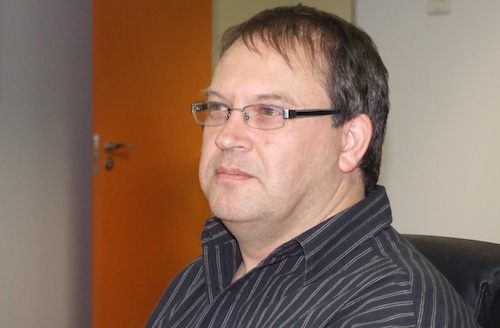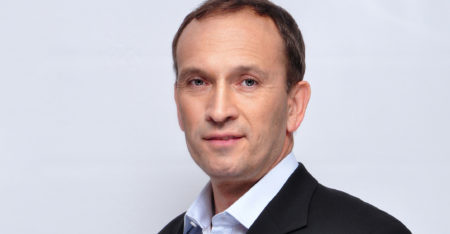[By Jannie van Zyl]
It’s like a movie about America’s Old West. Except this is SA, and it’s not a gripping story on the silver screen where actors get shot, dust themselves off, have a good laugh, and head back to their trailers.
No, in the Wild West we’re heading into, it’s SA consumers who’ll be in the crossfire, and the damage to them will be very real.
Who’s going to be doing the shooting? A bunch of cowboy Internet service providers (ISPs) and several big landowner operators wanting to hold on to what they’ve taken.
When the dust settles and the fighting is over in two or three years, many of these guys are not going to be left standing. And many innocents will be injured.
It’s the story of the good, the bad and the ugly in SA broadband.
How did we get here?
Anyone who’s spent any time in SA’s Internet or telecommunications industry is familiar with our history — Telkom, minister Ivy, the monopoly issue. The story is all about deregulation, how badly government managed it, and the mess it got us into.
The good
Let’s start by focusing on the good parts, the positives. Broadband penetration is rising — in the home, in small and medium enterprises, and in large businesses. Everyone has access to a growing panoply of bandwidth options.
There are also many new players. Competition is growing by the day and innovators are coming out with new offerings all the time.
There are ecosystems being set up comprising complementary service providers that can take advantage of more readily available bandwidth.
This applies at the high end, where vendor-neutral data centres and new peering points allow companies to pick and choose more freely. And it applies to the low-end, to small ISPs that can create niche products to address particular customers’ needs.
So, that’s all very nice. But it’s not good enough.
The bad
We’re paying through the nose for broadband. In the real Wild West, high prices were due to gouging by monopoly railways and ruthless robber barons. In modern SA telecoms … well, it’s not much different.
Realistically, prices have only come down marginally in the last few years. How can this be, you ask? ISPs are advertising great connections for less than a hundred bucks a month — unthinkable a few years back. But there is one cost that is never talked about. It’s assumed, glossed over, unmentioned — the access cost.
Every connection in SA has two cost components, namely the access cost, and the service provider cost, often known as the data rate. The access cost is not coming down. Telkom still has a monopoly on the last-mile copper loop. You’re still paying R600 to have a Telkom phone line installed and a R152, R326 or R413 monthly broadband line fee. And don’t forget the R130 basic line rental.
Before you’ve even begun to access the Internet, you’ve already paid more for your connection than people in Europe, America, Asia and even other countries in Africa pay in total.
So, having a fixed-line Internet connection is exceptionally expensive, and the solution, local-loop unbundling, is still a distant prospect. Even when unbundling happens, it’ll be expensive for other operators to install the necessary equipment in Telkom’s exchanges.
What about the alternatives? Over the past decade, various wireless operators have set up wireless alternatives to Telkom’s local loop.
But these players have not had a big impact on access layer pricing either. There are a few reasons for this. Limited licences were granted, and even more limited frequency spectrum was issued. There are only a few players — Telkom, Neotel, Vodacom, MTN, Sentech and iBurst parent Wireless Business Solutions.
The problem is that some of these players are not coming to the party when it comes to delivering connectivity to South Africans.
Building a wireline or wireless network is what we in the industry call “very expensive”. This means the vast majority of new licence holders will not be building networks anytime soon. Even the good Marshall Altech announced he will not be building his own network after taking down the bad sheriff who tried to stop him from doing exactly that.
This means, even with deregulation, we will probably still see the existing players dominating the industry. And some of them are just not doing what’s necessary.
Worse, spectrum is exceedingly limited. Though some providers are using this spectrum to connect broadband customers as fast as they can, some are doing nothing at all.
Those doing nothing should lose their spectrum. The question is, how can we tell if a licensee deserves to keep its allocation?
iBurst has developed a simple ratio that provides an intuitive feel for who is using spectrum efficiently, and who isn’t. It’s a bit rough and ready, and it ignores some finer details, but it provides a quick way of determining whether a licensee is doing SA a service or not.
We call it the “Paris Principle”, in honour of the man we hope will use it.
This is how it works: we take the number of base stations an operator has built, divide this by the spectrum it has been allocated, and look at the number of “Bs/MHz”.
Why base stations? With wireless networks, the number of base stations an operator has built tells us how many users it could possibly serve, as well as whether it is operationally capable of the logistical and technical challenges of building a wireless network.
For example, let’s take the Wireless Business Solutions network that powers iBurst Wireless. We have 5MHz of bandwidth, and have built 263 base stations in the past four years. That means we have a “spectrum usage ratio” of 52,6Bs/MHz.
Now, let’s look at the WiMax technology and which operators have spectrum. Our WiMax network has a ratio of 17,3Bs/MHz (260 towers and 15MHz). Sentech’s ratio is 0Bs/MHz (0 towers and 106MHz); Telkom’s ratio is 1Bs/MHz (57 towers and 56MHz); and Neotel’s is 1,3Bs/MHz (75 towers and 56MHz).
Are Sentech, Telkom and Neotel doing enough to keep their spectrum?
We’d like the Independent Communications Authority of SA (Icasa) to use this simple but effective “Paris Principle” to regulate frequency spectrum allocation to ensure the country benefits as fully as possible. It’s a strategic national asset.
However, the lack of effective spectrum usage in SA is only part of the problem.
The other challenge is that only a few players can provide a comprehensive national wireless service. Base stations are expensive, and the high sites to build them are hard to secure.
Operators need hundreds of millions of rand for capital investment. Their shareholders want a return on investment, but competition in the wireless access provision space is limited to a small handful of carriers. A red warning light is already flashing. Many of the operators are holding onto the wireless “last mile” for all they are worth, meaning that other service providers can’t buy wholesale access from them to create innovative services. This is keeping wireless broadband prices higher than they should be.
What is Wireless Business Solutions doing differently? A few months ago, we made a strategic decision to adopt an “open access” policy. If you’re a service provider, you can buy access to our network at wholesale prices. We believe Icasa should compel the other wireless operators to do the same.
The bottom line is this: the last-mile access network is the biggest component of the cost of broadband, and it’s not getting any less expensive. Addressing this problem should be a top priority for Sheriff Mashile.
SA needs local-loop unbundling as soon as possible; Icasa must enforce open access on wireless networks; and operators who are not making efficient use of spectrum should lose it.
And the ugly
But there’s another component to the big broadband mess SA finds itself in.
In the Wild West, it was the shoot-from-the-hip cowboys, the cattle rustlers and the bandits. In SA, it’s the irresponsible, foolish and sometimes downright dangerous ISPs. A whole gang of them have ridden into town, and they’re spoiling for a fight.
The concern is that some of these ISPs are offering data rates at well below market prices. There are cowboys and gamblers who buy wholesale bandwidth, and resell it at below cost, betting the farm their cost prices will continue to drop so that they get a nice big bunch of contracted customers on their books so that they can then make profit on them later.
At first glance this seems to be a consumer paradise. But many of these guys are also shaping traffic and bumping up contention ratios. This means users are getting cheaper rates but lower-quality connections.
In order for the market to stabilise, consumers must understand that they need to pay a fair price for their data so that ISPs can be sustainable and provide acceptable service.
Even though international data prices will continue to drop as more undersea cables come on-stream, this cost is becoming a smaller portion of the total cost of delivering broadband.
The gunfight between the ISPs will continue. We just have to take our medicine and wait for the dust and smoke to settle, and then drag off the bodies of the cowboys that were not fast enough or strong enough to survive.
Consumers and business owners need to have their wits about them and steer clear of the ISPs with tattered boots on mangy horses. Their promises of a broadband Eldorado may be empty.
- Jannie van Zyl is CEO of iBurst Group
- Subscribe to our free daily newsletter
- Follow us on Twitter or on Facebook





